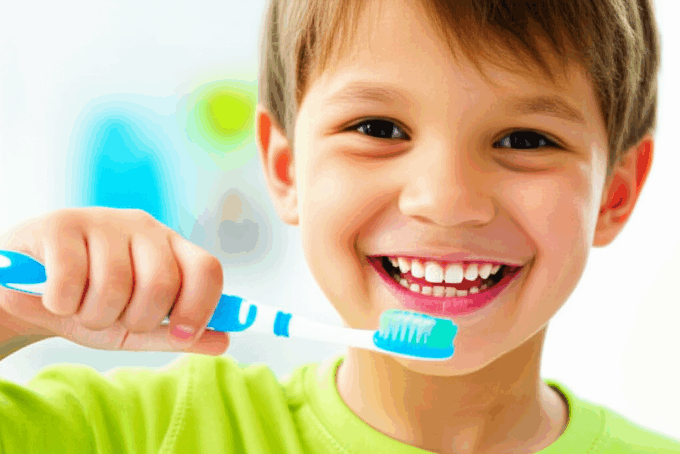Stunning health for kids starts with robust dental care. Establishing good habits early sets the foundation for a lifetime of healthy smiles, preventing common childhood dental problems like cavities and gum disease. It’s not just about aesthetics; a child’s oral health directly impacts their overall well-being, influencing their ability to eat, speak, and even their confidence. Fortunately, nurturing these healthy habits is achievable for parents with the right knowledge and consistent effort.
The journey to a healthy child’s smile begins even before the first tooth appears. While it may seem counterintuitive, cleaning your baby’s gums with a soft, damp cloth after feedings can remove bacteria and prepare them for the arrival of their pearly whites. Once the first tooth erupts, typically around six months of age, the real dental adventure begins.
The Importance of Early Dental Visits
One of the most crucial steps in ensuring your child’s stunning dental health is establishing a relationship with a pediatric dentist. The American Academy of Pediatric Dentistry recommends the first dental visit by a child’s first birthday or within six months of the first tooth erupting. These early visits serve multiple purposes. Firstly, they allow the dentist to check for any potential issues, such as early signs of tooth decay or developmental abnormalities. Secondly, it’s an opportunity for parents to receive personalized guidance on proper brushing techniques, fluoride use, and dietary recommendations. Finally, and perhaps most importantly, it helps familiarize your child with the dental environment, reducing anxiety and fostering a positive association with dental care. By making these visits routine, you’re not just addressing immediate concerns but proactively building a foundation for lifelong dental wellness.
Establishing a Daily Dental Routine
Consistency is key when it comes to fostering good dental habits. A daily routine that incorporates brushing and flossing is non-negotiable.
Brushing Effectively for Optimal Dental Health
For babies and toddlers, a tiny smear of fluoride toothpaste (about the size of a grain of rice) is sufficient. As they grow, the amount can increase to a pea-sized portion. Parents should supervise brushing until children are around seven or eight years old, ensuring they are reaching all surfaces of their teeth, including the back molars and the gum line. Using a soft-bristled toothbrush designed for children is essential to avoid irritating their gums. Many dentists recommend brushing twice a day for two minutes each time, accompanied by positive reinforcement to make the experience enjoyable. Consider making it a game or singing songs to keep your child engaged.
The Role of Flossing in Complete Dental Care
While brushing cleans the visible surfaces of teeth, flossing reaches those tight spaces between teeth where brushing cannot, effectively removing plaque and food particles. For young children who may struggle with traditional floss, floss picks designed for kids can be a great alternative. Introduce flossing once a day as soon as two teeth are touching. This might seem like a challenge initially, but with patience and practice, it will become a natural part of their oral hygiene.
Dietary Influences on Stunning Dental Health
What your child eats has a profound impact on their dental health. Sugary drinks and snacks are common culprits behind childhood cavities.
Navigating Sugary Temptations
Limiting the consumption of sugary foods and beverages is paramount. This includes not only obvious culprits like candy and soda but also seemingly healthier options like fruit juices, which can be high in natural sugars. Encourage water as the primary beverage and milk during meal times. When snacks are offered, opt for tooth-friendly choices like fresh fruits, vegetables, cheese, or plain yogurt. If sugary treats are consumed, it’s best to do so during mealtimes when saliva production is higher, helping to neutralize acids and wash away food particles.
The Power of Fluoride
Fluoride is a mineral that plays a critical role in strengthening tooth enamel and making it more resistant to acid attacks from bacteria. It can be found in most toothpastes and is often added to public water supplies. Ensure your child is using a fluoride toothpaste as recommended by their dentist and discuss with your dentist if water fluoridation is not available in your area or if your child requires additional fluoride treatments.
Beyond the Basics: Additional Dental Tips
While routine brushing, flossing, and a healthy diet are foundational, a few extra steps can further enhance your child’s dental well-being.
Dental Sealants for Protection
Dental sealants are thin, plastic coatings applied to the chewing surfaces of back teeth. These surfaces have pits and fissures that can trap food particles and bacteria, making them difficult to clean effectively and prone to decay. Sealants act as a protective shield, filling these grooves and preventing cavities. They are a simple, painless procedure that can significantly reduce the risk of decay in molars, which are often the most vulnerable teeth.
Mouthguards for Sports
If your child



